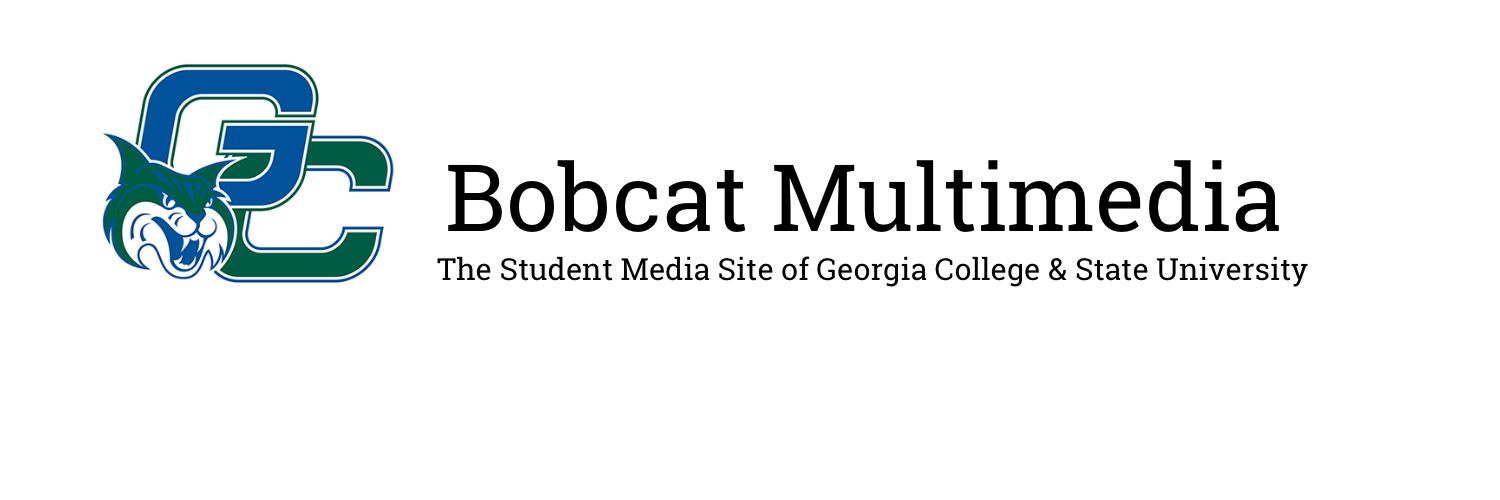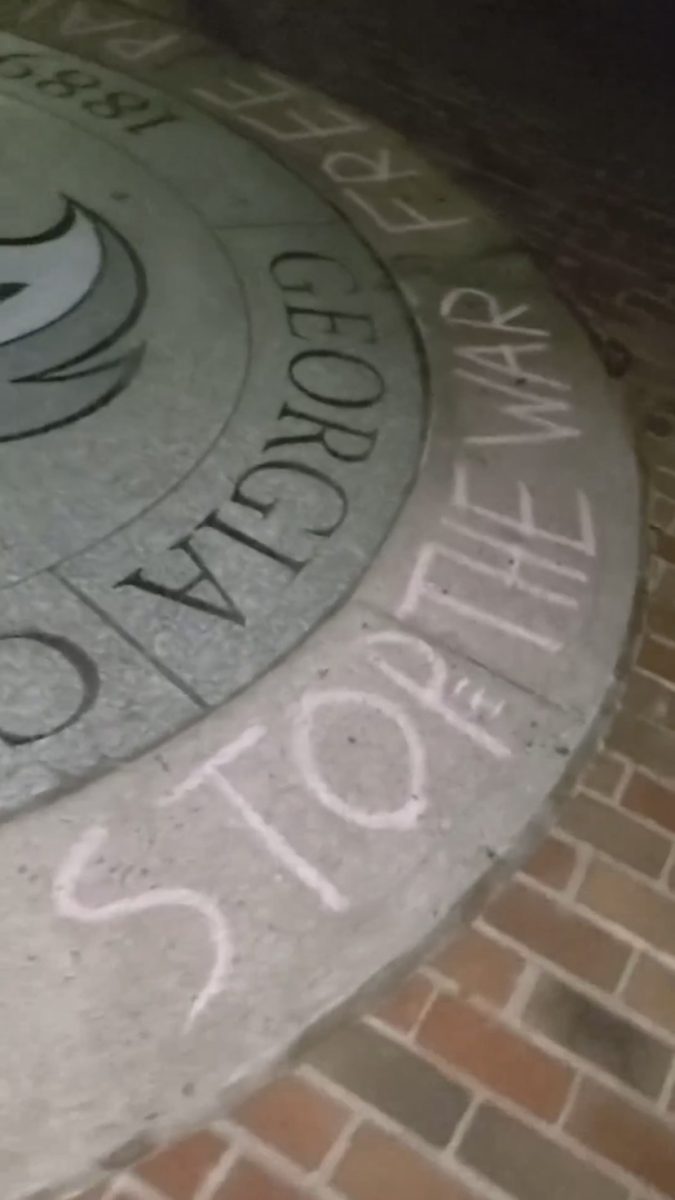As GC students begin to wander across Front Campus on the morning of March 4, they encounter a telling display surrounding the Bobcat Head: Over 150 miniature Palestinian flags surround the emblem. Chalk messages surrounding the emblem read “Free Gaza,” “Free Palestine” and “Free the Hostages.” Beyond, GC students find more: “30,000 Dead, 300 Taken” and “Stop Jewish Hate.” Conversation sparks, political dialogue increases across campus and Milledgeville is abuzz with this mysterious overnight display.
This is the reaction three anonymous GC students were anticipating when they spent the night of Sunday, March 3 creating this exact display. However, it is a vision that they never saw enacted because GC removed the entire demonstration before students got to see it. Students never saw the flags or the chalk, making what could have been a day of discourse an ordinary March Monday.
These three anonymous students wished to participate in the “March 2nd Global Day of Action for Palestine,” informally called “Stand With Palestine Day.” However, they also aimed to bring the conversation of the state of Palestine onto campus.
“Our campus is not very politically active, and we want to change that by having conversations and bringing awareness to causes that are often overlooked from inside our bubble,” one of the three demonstrators said.
However, when the university removed the display, these students were no longer able to invoke this dialogue and bring “Stand With Palestine Day” to GC’s campus.
“The chalk, Facilities [GC Facilities Management Services] washed off because of where it was,” said Amanda Respess, director of public affairs at GC. “Not because of what it was, but because of where it was.”
A content-based restriction would be a violation of the First Amendment right to free speech, but the university states that the issue with this particular demonstration was unrelated to the content and purely removed due to the location.
Student organizations frequently chalk sidewalks across campus, often to support Greek Life, campaign for Student Government, advertise club meetings or promote religious groups. If other organizations chalk the same area and their messages are left alone by the university, washing away this specific demonstration would be unconstitutional.
Around 5 p.m. on Monday, April 8, a campus religious group chalked around the Bobcat Head advertising for a Tuesday night worship on Front Campus. As of Tuesday afternoon, the chalk was still visible.
Although there was a bit of rain overnight, the chalk was still visible and readable on Tuesday, with the religious group confirming that they had not redone anything after the initial Monday night chalking.
GC does have a chalk policy outlined in the online Policy Manual. It states that the chalking of university sidewalks does not require any prior approval from the university, with the only other chalk-specific rule being “no chalking on vertical surfaces or brick.” However, there are other general rules that must be followed for campus advertising and expression.
“Profanity, offensive language/images are not permitted, messaging should fit an audience of 17 years and older, questionable messaging may be reviewed for educational value and connection to university mission,” the Policy Manual states. “Official university logos and marks cannot be altered or manipulated.”
“It does not say you can’t write on the Bobcat Head in there explicitly, but nobody ever does,” Respess said.
The Campus Life Student Organization Handbook further specifies where and when demonstrations can take place. The Flagpole Plaza on the east side of Front Campus is listed as GC’s “Designated Public Forum Area.” Some notable public figures have used this area in the past, including Sister Cindy Smock during her controversial visit in January 2024.
“Free speech is celebrated on a public campus and speakers who wish to speak at the Designated Public Forum Area may do so as long as they aren’t disrupting university business, abusing the rights of individuals, or preventing pedestrians from getting to their destinations,” the handbook states.
In May 2022, Georgia Governor Brian Kemp signed the Forming Open and Robust University Minds Act, which banned Georgia public colleges and universities from creating designated free speech zones. This means that colleges in Georgia can no longer restrict protests and other demonstrations to a specific location on campus. As long as they remain content-neutral, time, place and manner restrictions are still accepted under this legislation, as they keep demonstrations from disrupting regular campus activity.
Even though the students who chalked around the Bobcat Head were not actively standing and protesting or representing a student organization, there are some rules they would be expected to adhere to. But there is still no mention of restrictions surrounding the Bobcat Head emblem.
“People never chalk around the Bobcat Head, and they definitely don’t chalk on it,” Respess said. “In my conversations with Dr. Nadler [interim vice president for Student Life], he said that needs to be explicitly added to the policy, like to say, “The Bobcat Head,” but, just like we wouldn’t allow chalk to remain on one of the Bobcat statues, like the one in front of Mayfair or anything, it’s an art installation.”
The university states that the removal had nothing to do with the message itself, despite allowing the chalk promoting the worship night to remain. Still, there is also not currently any explicit policy from GC reserving the right to remove chalk from the Bobcat Head. Ambiguity continues to surround the removal, as there is no policy the university can point to that supports that the removal of this demonstration from the Bobcat Head was due to location, not content.


